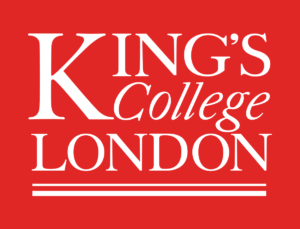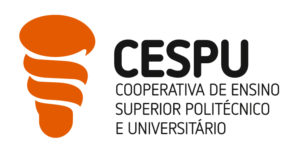Reverse smoking is an unusual form of smoking in which smokers place the lit end of the cigarette into the oral cavity and inhale the smoke. This particular form of smoking is prevalent on the Indian subcontinent. When the cigarette is held by the teeth and lips, the seal provided by the lips allows for a slower inhalation of the cigarette fume. In addition, moisture from the lip on the opposite end of the cigarette may allow for the cigarette to be consumed over a longer time period. Cigarette ashes are often swallowed in the process. The intraoral temperature can reach up to 120 degrees Celsius and the products of combustion increase the frequency of lesions inside the oral cavity when compared to conventional smoking. There is a relative paucity of epidemiological and controlled studies assessing these lesions.
In 2020, the World Health Organization (WHO) collaborating centre for oral cancer, defined palatal lesions in reverse smokers (PLRS) as ‘white and / or red patches affecting the hard palate in reverse smokers, frequently stained with nicotine’. These lesions were first described in the Indian state of Andhra Pradesh in the 1970s. Some of the changes in the palatal mucosa have a recognized malignant potential and PLRS are classified as an oral potentially malignant disorder (OPMDs).
Aetiopathogenesis
The palatal mucosa, when continuously exposed to higher temperatures in reverse smoking results in thermal injury. In combination with the products of combustion, this thermal injury leads to increased frequency of palatal lesions when compared to conventional smoking. The lips act as a seal that prolongs contact time. The carcinogenic effects of cigarette smoking are well reported and have been described throughout this series. Thermal injury along with prolonged contact with many of the carcinogens result in the likely changes in the palatal mucosa.
Epidemiology
- Reverse smoking is a smoking habit observed around the world, however, there is a distinct lack of epidemiological studies evaluating the geographic distribution.
- Reverse smoking is most frequently observed in warm and tropical climates in the developing world, in countries such as Columbia, Venezuela, Panama and India.
- The habit has also been observed in the developed world, for example it is known to be common on the Italian island of Sardinia.
- In India, reverse smoking appears to be a traditional habit amongst older woman in the southern state of Andhra Pradesh.
- The type of cigarette used in these areas are often called chutta. A chutta is a coarse preparation of cheroot of varying length which can be prepared by the consumer or in factories.
- A study investigating the psychosocial factors associated with reverse smoking found that the habit is derived or inherited maternally or from other people in the family or social circle.
- The study found a profound psychological aetiology as there is no apparent physical benefit to perpetuating the habit.
Clinical Presentation
Bharath et al., separated the palatal changes induced by reverse smoking into the following.
- Hyperpigmentation, in which well-defined diffuse or focal greyish black pigmentation is observed, as a result of melanocyte initiation. Typically, the margins are irregular, when compared to physiological racial pigmentation which presents as asymptomatic dark brown macules with less well-defined borders.
- Depigmentation, presents as pale areas in the oral mucosa, often surrounded by areas of hyperpigmentation. Bharath et al hypothesized that melanocytes act as an antioxidant that scavenge the toxic products produced by tobacco during combustion. Prolonged reverse smoking may deprive this melanin defense barrier causing a reduction of melanin production. Depigmentation may also be described as palatal keratosis.
- Excrescences describe approximately 1-3mm elevated areas with central dots which mark the orifices of minor salivary gland in the palatal mucosa. These represent the initial palatal reaction in reverse smokers. Excrescences have been often historically used synonymously with nicotina palatini observed in conventional smokers, however, carry a higher malignant potential. The orifices are often referred to as central umbilications.
- Potentially Malignant Lesions: These areas are clinically indistinguishable from leukoplakia and erythroplakia. These conditions have been described in chapters in this series.
- Ulceration: These represent a ‘burn’ type reaction of the palatal mucosa from thermal injury, these ulcers are often crater-like. Ulceration may be the direct result of thermal injury, however, may also represent frank carcinoma.
In addition, multimorphic lesions with all the above have been described where all or some the above palatal changes coexist in a single lesion.
Differential Diagnosis
Specific conditions such as oral lichen planus, oral candidiasis and oral lupus may present with clinical features such as those listed above. These can be excluded on careful history taking and enquiry into a reverse smoking habit. Oral candidiasis can be excluded by taking a swab for culture and the patient may also have other risk factors for oral candidiasis, such as coexistent immunosuppression. Differentiation of leukoplakia and erythroplakia has been described elsewhere in this e-learning tool.
Diagnosis
Careful enquiry into recreational habits and a history of long-standing reverse smoking should lead to a high degree of clinical suspicion when changes are observed in the palatal mucosa. Conventional oral examination with appropriate lighting should be sufficient to detect palatal oral mucosal changes.
Due to the malignant potential of PLRS, biopsy of these lesions is paramount and may show varying grades of dysplasia or carcinoma. Specifically, excrescences, histologically show hyperplasia of ductal epithelium.
Management
Management is dependent on the histological diagnosis. Lesions with moderate to severe dysplasia may undergo surgical excision. Similarly, carcinoma is treated by surgical excision, with or without neck dissection and radiotherapy, depending on lesion size and depth of invasion. The exact malignant transformation rate of PLRS is unknown due to the lack of studies. Similarly, the recurrence rates after treatment are also unknown. Van Der EB et al., concluded that reverse chutta smoking was one of the major determinants for palatal cancer. A dose frequency relationship is assumed, however cannot be confirmed due to the paucity of studies.
Summary
Reverse smoking is a rare and peculiar tobacco smoking habit which results in variety of changes in the palatal mucosa, which can range from hyperpigmentation to frank palatal carcinoma. Due to a lack of studies assessing this unique disease entity, there are many unanswered questions with regards to epidemiology, management, and malignant transformation rate.
References and further reading
Dharmavaram, A. T., Nallakunta, R., Reddy, S. R., & Chennoju, S. K. (2016). Demystifying the Enigma of Smoking – An Observational Comparative Study on Tobacco Smoking. J Clin Diagn Res, 10(4), ZC94-99. https://doi.org/10.7860/JCDR/2016/16359.7677
Harini, G., Krishnam Raju, K. V., Raju, D. V., Chakravarthy, K. K., & Kavya, S. N. (2016). Psychosocial factors associated with reverse smoking: A qualitative research. J Int Soc Prev Community Dent, 6(6), 529-534. https://doi.org/10.4103/2231-0762.195521
Pindborg, J. J., Mehta, F. S., Gupta, P. C., Daftary, D. K., & Smith, C. J. (1971). Reverse smoking in Andhra Pradesh, India: a study of palatal lesions among 10,169 villagers. Br J Cancer, 25(1), 10-20. https://doi.org/10.1038/bjc.1971.2
van der Eb, M. M., Leyten, E. M., Gavarasana, S., Vandenbroucke, J. P., Kahn, P. M., & Cleton, F. J. (1993). Reverse smoking as a risk factor for palatal cancer: a cross-sectional study in rural Andhra Pradesh, India. Int J Cancer, 54(5), 754-758. https://doi.org/10.1002/ijc.2910540508
Warnakulasuriya, S., Kujan, O., Aguirre-Urizar, J. M., Bagan, J. V., González-Moles, M., Kerr, A. R., Lodi, G., Mello, F. W., Monteiro, L., Ogden, G. R., Sloan, P., & Johnson, N. W. (2020). Oral potentially malignant disorders: A consensus report from an international seminar on nomenclature and classification, convened by the WHO Collaborating Centre for Oral Cancer. Oral Dis. https://doi.org/10.1111/odi.13704







